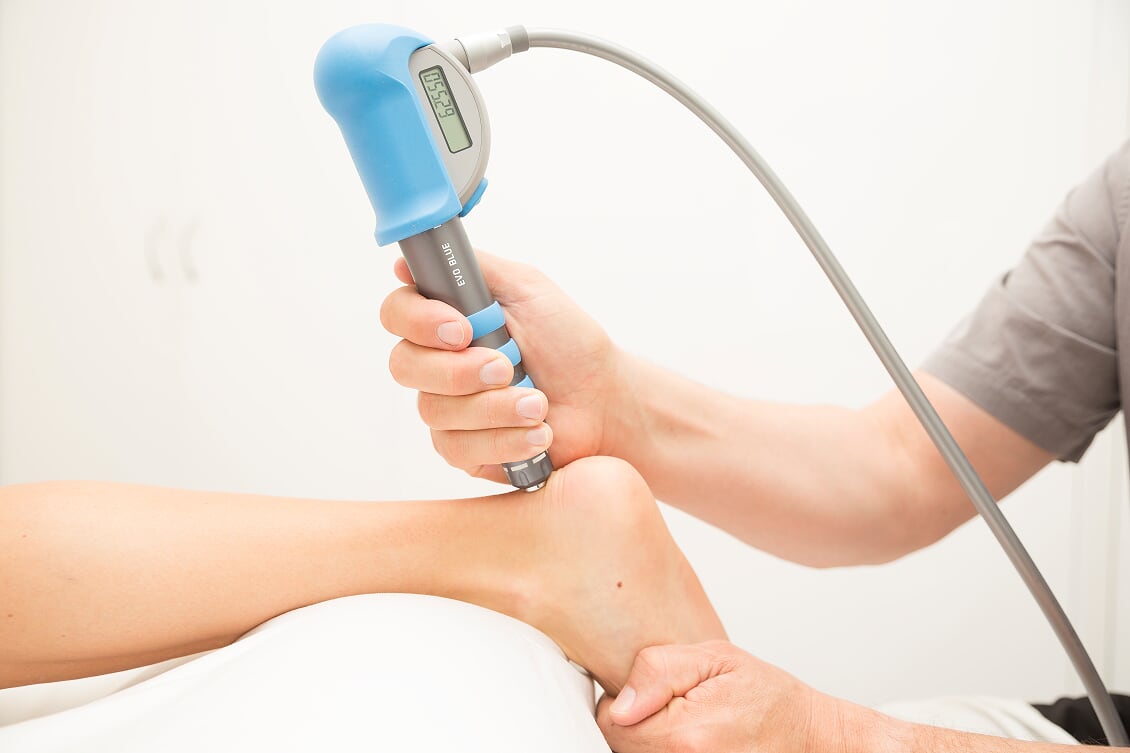Accelerate healing, reduce pain, avoid medication or steroid injections and even surgery with shockwave therapy.
What is shockwave therapy?
Whether you have plantar fasciitis, tennis elbow or an injury that won’t heal, shockwave therapy can help.
Shockwave therapy – also known as Extracorporeal Shockwave Therapy (ESWT) – is a non-invasive therapy that uses low-frequency, acoustic shockwaves generated via a handheld device that kick starts the body’s natural healing response in tissue that may not have responded to medication, rest or other therapies.
If you have tried rest, medications, other therapies or even steroid injections to overcome the injury, and are now considering surgery, then Shockwave Therapy could be a good option for you.
Up to 90% of patients report significant improvement in their tendon pain after a course of shockwave therapy.
How does shockwave therapy work?
 Extracorporeal radial shockwave therapy uses a pneumatically powered handpiece that generate low frequency radial shockwaves at the tip of the device, which are transmitted to the site of the injury through a conducting gel.
Extracorporeal radial shockwave therapy uses a pneumatically powered handpiece that generate low frequency radial shockwaves at the tip of the device, which are transmitted to the site of the injury through a conducting gel.
Most patients report notable pain relief immediately after therapy, others can take up to 4-5 sessions to achieve significant pain relief. The body’s natural healing process continues after the prescribed course of shockwave therapy.
Part of the treatment plan will also include advice on how to manage your condition and rehabilitation to strengthen the area, which will minimise the risk of re-injury.
Clinical trials have shown that shockwave therapy has an up to a 90% per cent success rate in some conditions, in as little as three to five sessions.
Who is shockwave therapy for?
 Anyone with a chronic injury that involves tendon or muscle should be assessed by a physiotherapist specialising in shockwave therapy.
Anyone with a chronic injury that involves tendon or muscle should be assessed by a physiotherapist specialising in shockwave therapy.
This can be done as a free assessment at a Back In Motion clinic. Shockwave therapy can be used to treat conditions including Achilles pain, plantar fasciitis, tennis elbow, golfers’ elbow, jumper’s knee, shin splints, gluteal tendinopathy and shoulder tendinopathy (with calcification), frozen shoulder, musculoskeletal disorders, and heel spur pain.
How many shockwave treatments will I need?
The number of shockwave session required will depend on the type of injury, where it is located in the body and how long you have had the injury for. The average number of treatments is three to five sessions (maximum of 8); however is comes down to the individual. Best practice is treatment five to seven days apart until the course is completed.
Who performs the shockwave therapy treatment?
It is important that your injury is assessed by an appropriately trained physiotherapist to ensure that shockwave therapy is right for you. Your physiotherapist will also prescribe exercises in conjunction with your therapy; as this will improve
the outcome and increase the resilience of the tissue.
